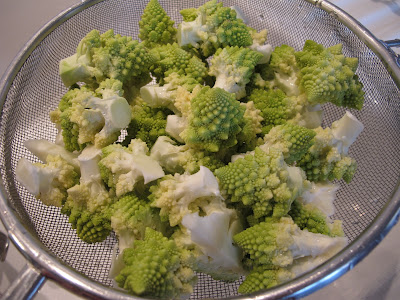 |
| Chestnut tree |
Chestnuts are definitely the sign that Christmas is here! I thoroughly enjoy the smell of them being roasted by the street vendors in town, and then eating them from a paper cone.
Chestnuts have a sweet flavour and they are delicious boiled, roasted, sautéed, added to soups and casseroles, used in baking, as flour etc. For thousands of years chestnuts have been a staple food in the Mediterranean area. Ancient Greeks and Romans attributed several medicinal properties to chestnuts, like protection against dysentery, poisons and even against the bite of a mad dog.
Before I break for the holiday season, I’m posting a recipe of chestnut soup with porcini mushrooms, which gives it a lovely earthy taste. I made a slightly adaptation on Alain Ducasse’s recipe. As the master says, this should be a simple way of cooking these lovely nuts.
I wish you all a very Merry Christmas and a happy celebration around a table.
Let indulgence begin!
 |
| Fresh chestnuts in their shells picture by John Wright |
 |
| Cooked chestnuts |
 |
| The rest of the ingredients |
 |
| Dice the mushrooms |
 |
| Sautee chestnuts with celery and shallots |
 |
| My chestnut soup! |
Chetsnut soup (a la Alain Ducasse)
Serves 4 as a starter or 2 as a main course
This is a lovely dish to start a Christmas dinner. It’s packed with healthy nutrients.
INGREDIENTS
4 slices of organic unsmoked bacon
1 shallot, chopped
1 celery stick, chopped
1 garlic clove, chopped
600g organic peeled chestnuts, fresh boiled, defrosted or vac-packed
1 bay leaf
5 whole peppercorns
1 litre vegetable or chicken stock, or water
40g dried porcini or 80g fresh ones
METHOD
Preheat the oven to 120C. Lay the slices of bacon in a heated flameproof casserole dish. Colour well both sides. Take them out and keep them hot. Add the shallots, celery, and garlic to the bacon fat. Stir for 2 min. Add all the chestnuts to the casserole dish, Sweat for 3 min, stirring. Take out about 10 of the chestnuts and set aside. Add the bay leaf and the peppercorns, followed by the stock or water. Put the pan in the oven and bake for 45 minutes.
In the meantime, chop the mushrooms into small dices (if using dried ones, soak them first, then slice when soft).
When the chestnut casserole is done, take the bay leaf out and blend the soup thoroughly. Taste and adjust the seasoning. Keep hot. Cut 2 reserved slices of bacon onto lardons and cut the 10 reserved chestnuts into quarters. Heat a tablespoon of olive oil in a sautée pan and brown the chestnuts for 2 minutes. Add the diced mushrooms. Salt lightly and cook for 2 to 3 minutes. Add the sliced bacon, stir and adjust the seasoning. Put this garnish in the middle of each soup plate. Pour the hot soup around it. Sprinkle with mushroom flakes and serve hot.
The main ingredient and its healthy benefits
Chestnuts (Castanea sativa): Studies have shown that chestnuts can aid in the treatment of convulsive cough (whooping cough) and in any other condition of the upper respiratory system. They are the only nuts that contain vitamin C (100g of chestnuts provide 45% of its recommended daily dosage) and are low in fat.
Chestnuts are a great source of protein, which makes them a good body building food.
A chestnut congee is particularly useful as a tonic for the kidneys. It also strengthens the knees and loin, and helps those who suffer from haemorrhoids.
Chestnuts support the care of the teeth and gum, especially advanced gingivitis (pyorrhea). The nuts are alkaline, which make them a good choice of food to help neutralize excess acid in the blood, facilitating their elimination in the urine.
As they are low in sodium and high in potassium, they are recommended for people who suffer from high blood pressure.
Caution: Chestnuts contain 52% of water, which makes them quite susceptible to mould and bacterial growth. Make sure you keep them covered and refrigerated.
Till January!































